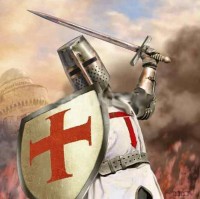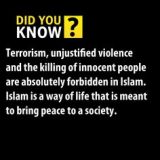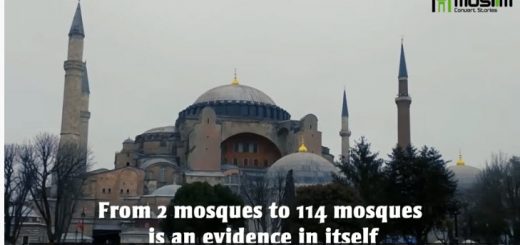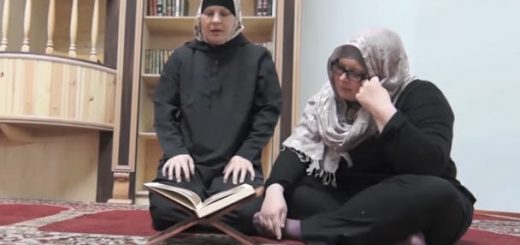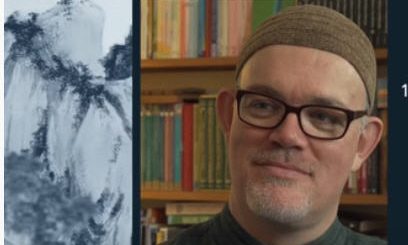Andalusia one of the routes of Islamic civilization to Europe
Written by Dr. Ragheb Elsergany
Introduction
 The eternity of civilizations is measured by the amount of the everlasting contributions they offer to the history of humanity in various aspects of thought, sciences, and morals. As we learned about the great role Islamic civilization played in the history of human development, we can identify these contributions through what Europe or the European renaissance and civilization has achieved. This is because the accomplishments of European civilization have been influenced by Islamic civilization which preceded it. Without exaggeration, the modern European history is the natural extension of the history of Islamic civilization when it was flourishing. There was no separation between them.
The eternity of civilizations is measured by the amount of the everlasting contributions they offer to the history of humanity in various aspects of thought, sciences, and morals. As we learned about the great role Islamic civilization played in the history of human development, we can identify these contributions through what Europe or the European renaissance and civilization has achieved. This is because the accomplishments of European civilization have been influenced by Islamic civilization which preceded it. Without exaggeration, the modern European history is the natural extension of the history of Islamic civilization when it was flourishing. There was no separation between them.
Routes of Islamic civilization to Europe
Historians are almost unanimous that Islamic civilization came in contact with the Christian European West during the medieval times, when Europe was going through total darkness, through three main routes. These routes, which varied in the level of activity and cultural impact, were Andalusia, Sicily, and the crusades.
Andalusia one of the routes of Islamic civilization to Europe
Andalusia is the main route of Islamic civilization and the most important bridge through which Islamic civilization moved to Europe and had an impact on various scientific, intellectual, social, and economic fields. Andalusia, part of Europe, remained for eight centuries (92 – 897 A.H/ 711-1492 A.D) a radiating beacon of civilization during the time when Muslims were there, even when it was politically weak, and when the party kingdoms appeared. That was owing to the universities, schools, libraries, factories, palaces, gardens, scientists and men of letters in Andalusia which attracted the attention of Europeans with whose countries Andalusia had close and continuous contacts[1].
Soon after the Muslims settled in Spain they devoted themselves to gaining knowledge and focused their attention on sciences, literature, and arts. In this, they excelled their brothers in the Mashreq. The Muslims invented new and great things in all sciences which provided Europe with fresh resources which it continued to use from the late 11th century until the Italian renaissance in the 15th century.
Gustav Le Bon says: “No sooner had the Arabs completed the conquest of Spain than they started to carry out the message of civilization there. In less than a century, they managed to give life to dead lands, reconstruct ruined cities, set up magnificent buildings, and strengthen close trade relations with other nations. They then started to dedicate themselves to studying sciences and arts and to translate Greek and Latin books and set up universities which continued to be a place for culture in Europe for a long time.[2]”
The policy of Islamic tolerance had a great impact on Ahl al-Zimmah (non-Muslims living under protection), including Jews and Christians as the Arabized Spanish people took interest in studying the Arabic language and using it in their everyday lives. They even preferred it to the Latin language. Many Jews studied at the hands of Arab teachers.
Translation in Andalusia
Translation from Arabic in Andalusia flourished greatly, particularly in Toledo during the 12th and 13th centuries. Translation used to be from Arabic into Spanish and then into Latin or from Arabic into Latin directly. Translation was not restricted to books written by Arab scientists about all branches of knowledge only but covered great Greek books which were translated in the Mashreq two centuries earlier. Some books by Greek writers, such as Galen, Hippocrates, Plato, Aristotle, Euclid, and others were translated.
One of the most famous translators of Toledo was Gerard of Cremona. Called the Toledan, he came to Toledo from Italy in (1150 A.D). Gerard of Cremona is said to have translated about a hundred books, including 21 about medicine, including Al-Mansuri by Al-Razi, Al-Qanun (The law) by Ibn Sina. Some of the books seem to have been translated by his students under his supervision and some in collaboration with others, particularly (Galipus). He was Arabized. During the 12th century, translation was also practiced by Spanish people and others who came to Spain. Alfonso X, the king of Castilla (1252-1284 A.D), set up a number of higher education institutions and encouraged translation from Arabic into Latin and sometimes into the Castilian language.[3]
Sarton says: “Muslims, the geniuses of the Orient, made the greatest achievements in the Middle Ages. The most valuable, original, and informative books were written in Arabic. From the middle of the 8th century till the end of the 11th century Arabic was the elevated science language of human race to the point that any person who wanted to be familiar with the culture of the age and its latest form had to learn Arabic. Many non-Arabic speakers did so. I do not think we need to point out the scientific achievements of Muslims in the fields of mathematics, physics, astronomy, chemistry, botany, medicine, and geography.[4]”
Influence of Cordova on European renaissance
Speaking about the status of Cordova, particularly in the movement of Islamic civilization, Juan Brand Trand John said: “Cordova, which was more civil than all European cities during the 10th century, was in fact the focus of the world’s admiration and astonishment, such as Venice in the eyes of the Balkan states. The tourists coming from the north used to show almost piety and fear when they were listening to what was being said about this city, which had seventy libraries and 900 public baths.
If Leon or Navarre or Barcelona governors needed a surgeon, engineer, or architect, tailor, or musician they would only go to Cordova[5].
The thinker Leopold Weiss[6] or “Muhammad Asad” underlined the role of Cordova in paving the way for the age of renaissance, saying: “We would not be exaggerating if we said: The modern scientific age in which we live did not start in European cities, but in Islamic centers; in Damascus, Baghdad, Cairo, and Cordova.”[7]
Speaking about Andalusia in general as a bridge between Islamic civilization and the West, Sigrid Hunke says: “The Pyrénées Mountains were not to prevent these contacts. Therefore, the Arab, Andalusian civilization found its way to the West.”[8]
She adds: “The torch of Arab civilization was carried across Andalusia by thousands of European captives who returned from Cordova and Zaragoza and the other Andalusian culture centers. Also, the traders of Leon, Genoa, Venice, and Nuremberg played the role of mediator between the European and Andalusian cities.
On their way to Santiago, millions of European Christians got in contact with Arab traders and Christian pilgrims coming from northern Andalusia. The flow of horsemen, traders and religious clerics coming annually from Europe to Spain contributed to moving the foundations of Andalusian civilization to their countries. Jewish traders, doctors, and learned people carried the culture of Arabs to Western countries. They also participated in translation works in Toledo and translated from Arabic a large number of stories, myths and legends.[9]”
Andalusia was therefore an important centre for Islamic civilization and was one of the most important routes via which this civilization moved to Europe.
[1] – Hani al-Mubarak and Shawqi Abu Khalil: Dawr al-hadarah al-Al-Arabiyah Islamiyah fi al-nahda al-urubiyah (Role of Arab, Islamic civilization in European renaissance) pp 51,52
[3] – Look: Mahmud al-Galili: Ta’thir al-tib al-arabi fi al-hadarah al-urubiyah (Impact of Arab Medicine on European Civilization), the link: http://www.islamset.com/arabic/aislam/civil/civil1/algalely.html
[4]- Hassan Shamsi Pasha: Hakaza kanu yawm kuna (That was how they were when we were) p 8, look: Ahmad Ali Al-Mulla: Athar al-Ulama al-Muslimin fi al-hadarah al-urubiyah (Impact of Islamic scholars on European civilization) pp 110,111
[5] – Juan Brand Trand: Spain and Portugal, study published in Turath al-Islam (Heritage of Islam) book under the supervision of (Arnold) p 27
Number of View :2141





